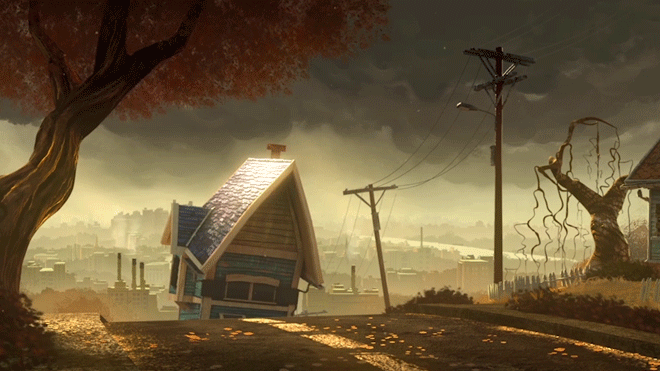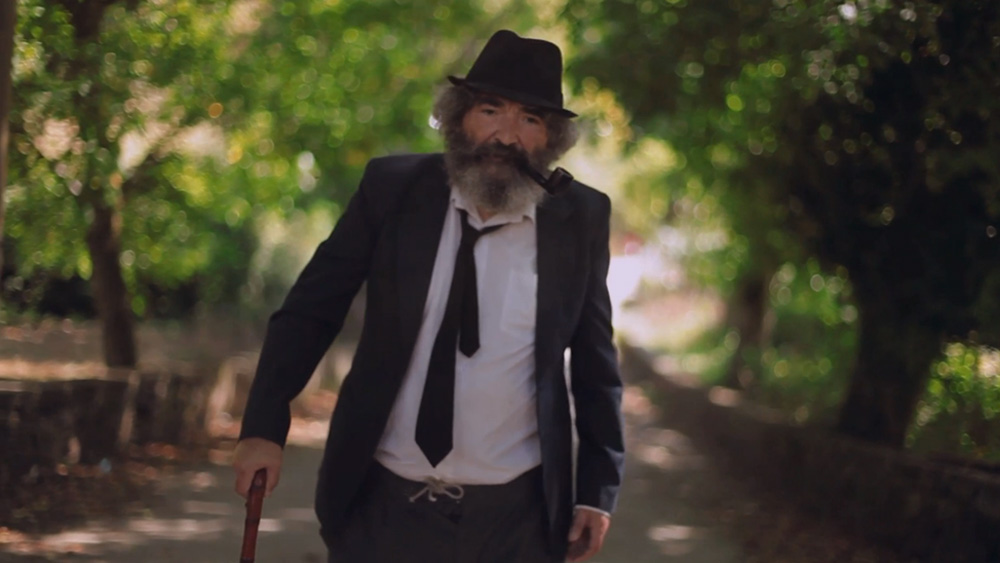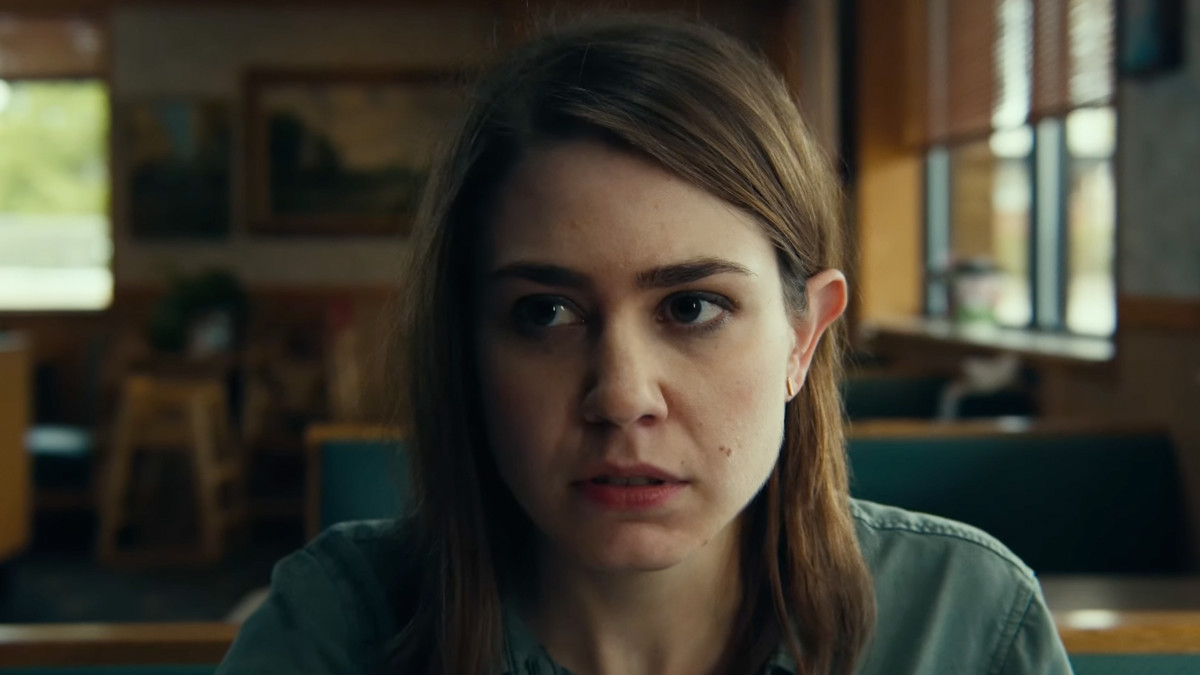When a bleeding-heart vegan and her pragmatic roommate’s rodent infestation intensifies, they find themselves at odds regarding methods that are inhumane yet effective.
We humans have a very complicated relationship with mice, and director A.K. Espada brings that relationship to a new level in ‘This Is Our Home’. Dealing with a rodent infestation with her roommate, the main protagonist, being a vegan, tries find a way to get rid of the mice mercifully. But things get a little more sticky than expected for Dina in a frightening and suspenseful turnaround. The short truly brings the best of the small screen experience with a splendid production all around, from the photography to the incredible set design. We checked in the A.K. who told us a little more about the film.

Can you tell us what inspired you to bring this story to life?
Years ago, I moved into an apartment that we soon realized was infested with mice. They weren’t scared of us at all. They ran around in broad daylight, climbed into bed with us, and made a nest of pink squirming babies in my closet. It was quickly becoming their home more than mine and my roommates’. As the resident animal lover vegetarian, I was horrified by the idea of using glue traps and poison. I only wanted to use live capture traps. Eventually we realized the live traps weren’t doing the job. We ended up resorting to crueler methods to wipe the mice out. I went along with it, feeling incredibly guilty the whole time. I just kept telling myself what my roommate said to me: “We deserve to live in a happy, pest-free home.” But the more I thought about what we’d done, the more I became convinced that if mice someday wised up and figured out how to poison humans, we might deserve it.
As a writer/director are you open to changes or suggestions when you start shooting or do you like to stick to what has been written?
I’m usually open to suggestions, especially if the idea simplifies things. Once I’m in shooting mode I’m always trying to keep things from getting more complicated than we’d planned for. I often feel that the simplest way of shooting things is the strongest for the type of film I want to make. For the actors, I am usually happy for them to ad-lib and shape the script to the voice they bring to the character.

Tell us about the details of the decor in the apartment, who designed it and what were the intentions?
Alex (DP Alexandra Bock) and I wanted the apartment to have a very recognizable Brooklyn look to tether it to reality somewhat since it’s a pretty grounded concept–household pests. But we also wanted it to have an otherworldly quality. Everything I make has some degree of magical realism because I like to write about the parts of life that feel like the other side of a bizarro mirror. Life can be so mundane yet so absurd at the same time. I work as crew in Set Dec and Scenic Painting, so all of my best friends showed up to work on this movie and transformed the apartment we used as a set. Roxy Michaud-Martinez, the Production Designer; Zelda Vyssotsky and Tyler Riefke, who handled the props, many of the graphics, puppets, and SPFX stuff; Rachel Marquez, who helped me pick all the set decoration and was our on-set dresser; the puppet-makers Dylan Pecora and Haley Nocik; our editor Bobby Wagnerman. Even for such a small movie, so many people contributed their own creative touches.
What was the most challenging scene for you to film?
Anything that involved the mouse puppets required multiple people hidden from view tugging on monofilament or twisting rods to make them move, and that coordination was tough to execute.

What has this film taught you about filmmaking?
I don’t know if I can quantify everything it has taught me. This was the first bigger short project for both Alex and me, and although we had both made several shorts before this, I think this one really turned us into more confident filmmakers. We learned how to prep without spinning our wheels, how to work with a crew of 15+ people, and how to run a set where people have a creative and emotional bond with what we’re doing. I made a ton of mistakes, most of which I’ll never make again because of this experience.
What do you hope people will take away from ‘This Is Our Home’?
I think the best any filmmaker can hope for is that people think about what they’ve made later and that it means something to them. I hope that it challenges people to see “undesirable” animals differently, and if one person stops using glue traps because of it, It will have been worth it. I’m obsessed with exploring what the world might look like if humans were no longer at the top of the food chain. Nature taking over, or humans underestimating nature then regretting it, is my favorite subgenre of horror, including films like “VIVARIUM” by Lorcan Finnegan, “NOPE” by Jordan Peele, Hitchcock’s “THE BIRDS,” Spielberg’s “JAWS,” Frank Marshall’s “ARACHNOPHOBIA,” the list goes on!

What are your favorite short films?
Two I’ve loved for a long time are “HASTA LOS HUESOS,” a gorgeous stop-motion animation by René Castillo about where we go when we die, and “DEATH TO THE TINMAN,” an inventive Wizard of Oz origin story by Ray Tintori that makes fantastic use of rear projection. Of course as a horror filmmaker I can’t forget the brilliant simplicity of “LIGHTS OUT” by David F. Sandberg.
A few I’ve loved in the last few years are “PRINCESS RITA” by Blair Waters, “ENDS” by David Tabor.
Keep an eye out for a few of my favorites that I’ve seen in festivals this year: “The BUSINESSMAN” by Nathan Ginter, “DEMON BOX” by Sean Wainsteim, and “NO MAN’S LAND” by Lacey Jeka. I also have to plug “THE PROMOTION,” a short that’s making the festival rounds right now by my little film collective, FILM CLUB (Phil Cheney, Daniele Sarti, Michael Spencer, and me.)
Which films you can say directly inspired this film?
Visually, I’m always inspired by the work of Park Chan-Wook–“BAKJWI” in particular here–and Tim Burton’s mid-career aesthetic, such as Anton Furst’s design for Selina Kyle’s apartment in “BATMAN RETURNS,” but you can definitely see a lot of Henry Selick’s “CORALINE” as well. From a thematic standpoint it’s hard to say, because I truly wrote this film from my heart based on the particular brand of terror you experience when you have dozens of creatures invading your space. But I think there must be quite a bit of David Lynch’s “MULHOLLAND DRIVE” in the style of the humor and the way the magical elements don’t require explanation, as well as Guillermo Del Toro’s “PAN’S LABYRINTH” in how I was intent on using puppets for everything and while I knew they didn’t look realistic, I wanted their movements to have personality and to be as lifelike as possible.




